acidic: having the properties of an acid, or containing acid; having a pH below 7. Often contrasted with alkaline or basic.
adventitious: arising from an organ other than root; usually lateral.
adventitious buds: dormant buds which form on stumps or roots after cutting or injury.
alga, pl. algae: a simple nonflowering plant of a large group that includes the seaweeds and many single-celled forms. Algae contain chlorophyll but lack true stems, roots, leaves, and vascular tissue.
alkaline: having the properties of an alkali, or containing alkali; having a pH greater than 7. Often contrasted with acid or acidic; same as basic.
angiosperms: (meaning "covered seed") are flowering plants. They produce seeds enclosed in fruit (an ovary). They are the dominant type of plant today; there are over 250,000 species. Their flowers are used in reproduction. Angiosperms evolved about 145 million years ago, during the late Jurassic period, and were eaten by dinosaurs. They became the dominant land plants about 100 million years ago (edging out conifers, a type of gymnosperm). Angiosperms are divided into the monocots (like grasses and corn) and dicots (like beans).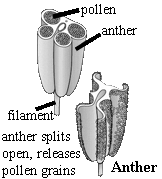
anther: the part of a stamen that bears the pollen.
aphid: a minute bug that feeds by sucking sap from plants. It reproduces rapidly, often producing live young without mating.
apical: at the top, tip or end of a structure, terminal.
apical dominance: when the terminal bud inhibits growth of lateral vegetative buds.
arborescent: tree-like in appearance and size.
asexual reproduction: reproduction by vegetative methods such as cuttings, layering, grafting, or tissue culture. Frequently called propagation. [See cuttings, layering, grafting, or tissue culture.]
auxin: a plant hormone that causes the elongation of cells in shoots and is involved in regulating plant growth. It is commonly used to assist in the productions of roots on cuttings.
axil: the upper angle between a leaf stalk or branch and the stem or trunk from which it is growing.
axillary bud: a bud that grows from the axil of a leaf and may develop into a branch or flower cluster. Also called lateral bud.
azalea: a type of rhododendron, azaleas are generally different from other rhododendrons by being more floriferous and having less impressive foliage. Typically an azalea is either evergreen with flowers individually rather than in a truss or is deciduous and may have flowers singly or in a ball-shaped truss. On the other hand, a rhododendron that is not an azalea is evergreen and has evergreen that are in trusses (a truss is a flower-like structure composed of many flowers). (azalea is from Greek, feminine of azaleos ´dry,´ because the shrub flourishes in dry soil.)
bacterium, pl. bacteria: members of a large group of unicellular microorganisms that have cell walls but lack organelles and an organized nucleus, including some that can cause disease. Bacteria are widely distributed in soil, water, and air, and on or in the tissues of plants and animals. Formerly included in the plant kingdom, they are now classified separately (as prokaryotes).
bark: tissues of plant that are outside wood or xylem.
bark split: occurs when sap is flowing from the roots through the xylem and a freeze occurs. This freezing causes the watery substance in the xylem to freeze and rupture the bark and cambium layer. See Bark split in the problems section.
basic: having the properties of a base, or containing a base; having a pH greater than 7. Often contrasted with acid or acidic; same as alkaline.
beetle: an insect of an order distinguished by forewings typically modified into hard wing cases (elytra) that cover and protect the hind wings and abdomen. Weevils are a type of beetle. A member of order Coleoptera, which is the largest order of animals on the earth.
bi-generic: hybrid with parents in two different genera.
blossom: a flower or a mass of flower on a tree or bush.
blotch: area of contrasting color on the uppermost petal(s) of some plants.
bloom: a waxy coating found on stems, leaves, flowers and fruits, usually of a grayish cast and easily removed.
botany: the scientific study of plants, including their physiology, structure, genetics, ecology, distribution, classification, and economic importance.
bract: a modified leaf or scale, typically small, with a flower or flower cluster in its axil. Bracts are sometimes larger and more brightly colored than the true flower, as in a poinsettia.
bud: a compact knoblike growth on a plant that develops into a leaf, flower, or shoot.
bud scale: leaflike structures surrounding a flower bud.
bug: A member of the order Hemiptera, a large order of insects that comprises the true bugs, which include aphids, cicadas, leafhoppers, and many others. They have piercing and sucking mouthparts and incomplete metamorphosis.
calcareous: limy or chalky rock or soil with a high proportion of calcium carbonate..
callus: healing growth over a wound or cut.
calyx: the sepals of a flower, typically forming a whorl that encloses the petals and forms a protective layer around a flower in bud. The lowermost whorl of modified leaves, sepals.
cambium: the layer of actively dividing meristemic cells between the wood, and bark of stems or roots. The cambium forms the specialized xylem and phloem cells and causes the stem to increase in thickness. A green cambium layer is a sign of life in a woody stem.
carpel: the female reproductive organ of a flower, consisting of an ovary, a stigma, and usually a style.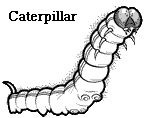 Same as pistil.
Same as pistil.
caterpillar: the larva of a butterfly or moth, having a segmented wormlike body with three pairs of true legs and several pairs of leglike appendages. Caterpillars may be hairy, have warning coloration, or be colored to resemble their surroundings. Caterpillars (moths and butterflies) are insects in the order Lepidoptera.
cell: the smallest structural and functional unit of an organism, typically microscopic and consisting of cytoplasm and a nucleus enclosed in a membrane.
chlorophyll a green pigment, present in all green plants and in cyanobacteria, responsible for the absorption of light to provide energy for photosynthesis. Its molecule contains a magnesium atom.
chlorosis: leaves partly or wholly pale green or yellowed due to a lack of chlorophyl . It is usually caused by a nutrient problem caused by a troublesome soil pH or low nutrient concentration.
chromosome:: microscopic, self-replicating molecule found in the nucleus of cells. Chromosomes contain genetic material (a single DNA molecule that contains many genes). The genome of an organism is made up of the set of chromosomes that contain all of its genes. Chromosomes were discovered by Walther Fleming in 1879; the term chromosome was proposed by Waldeyer in 1888.
cilium, pl. cilia: small hairs, often present on leaf margins.
class: a principal taxonomic grouping that ranks above order and below phylum or division
classification: the arrangement of animals and plants in taxonomic groups according to their observed similarities (including at least kingdom , phylum in zoology, division in botany, and class, order, family, genus, and species). See the section on Classification. The genus Rhododendron is part of the family Ericaceae, order Ericales, subclass Dilleniidae, class Magnoliopsida, division Magnoliophyta, superdivision, Spermatophyta, subkingdon Tracheobionta, and kingdom Plantae.
clone: a group of organisms or cells produced asexually (by vegetative methods such as cuttings, layering, grafting, or tissue culture) from one ancestor or stock, to which they are genetically identical.
corolla: the petals of a flower, typically forming a whorl within the sepals and enclosing the reproductive organs.
cotyledon: a seed leaf, not a true leaf, but one of the two embryonic leaf-like structures that emerge from the seed.
crawler: the mobile nymph stage of certain insects such as scale insects, and mealybugs. Later nymphs become somewhat or completely immobile.
crown: the junction of the roots and the stem.
cultivar: an asexually propagated, cultivated form of a plant.
cultivate: break up soil in preparation for sowing or planting or to prevent weeds from being established. See cultivating.
cutting: new growth cut for rooting or other vegetative propagation.
deciduous: shedding its leaves annually. Often contrasted with evergreen .
dicot: is a type of flowering plant (an angiosperm) whose seed has two embryonic leaves (cotyledons). The leaf veins are usually net-like (and not parallel).
dimorphic: having two distinct shapes or forms. Evergreen azaleas are dimorphic, having spring leaves that unfold at the beginning of the growing season and are dropped in autumn and summer leaves that emerge in early summer and are smaller, thicker, darker, and more leathery than spring leaves.
diploid: describing a cell that has the same number of chromosomes that most other cells of that organism have (except the gametes, like the pollen grain and the egg, which are haploid).
division: a principal taxonomic category in botany that ranks above class and below kingdom, equivalent to the phylum in zoology.
DNA: (short for deoxyribonucleic acid) is a complex organic molecule that carries the genetic information of an organism. DNA is the primary constituent of chromosomes. DNA is made up of two strands of amino acid bases (adenosine, cytosine, guanine, and thymine) arranged in a double helix. DNA's chemical instructions are carried throughout the cell by another nucleotide, RNA.
dormant: alive but not actively growing.
double: (of a flower variety) all the stamens have been transformed completely into petals, which may be similar in size and shape to the corolla petals, and the pistil may have been transformed, but the calyx has not been transformed.
double hose-in-hose: (of a flower variety) the stamens and calyx have all been transformed into petals.
drained: make (land) drier by providing channels for water to flow away and perculate to the subsoil.
egg: the female reproductive cell in animals and plants; an ovum.
elepidote: without scales, as opposed to lepidote (with scales).
embryo: the part of a seed that develops into a plant, consisting (in the mature embryo of a higher plant) of a plumule, a radicle, and one or two cotyledons.
endemic: native or confined naturally to a given geographical area.
epiphytic: a plant growing non-parasitically upon another.
Ericaceae family: members of the Ericaceae family include the fruit-bearing blueberries, cranberries and huckleberries as well as the rhododendron, azalea, arbutus, trailing arbutusis (Mayflower), heather, mountain laurel (genus Kalmia) and true heaths (genus Erica ). The Ericaceae are often called heath family or the family of "acid-loving plants" since they tolerate acidic soils quite well, and many require an acidic soil. The family Ericaceae if part of the order Ericales, subclass Dilleniidae, class Magnoliopsida, division Magnoliophyta, superdivision, Spermatophyta, subkingdon Tracheobionta, and kingdom Plantae.
ericaceous: belong to the family Ericaceae, which includes rhododendrons, heathers, mountain laurel, blueberries, etc.
evergreen: of or denoting a plant that retains green leaves throughout the year. Often contrasted with deciduous.
family: a principal taxonomic grouping that ranks above genera and below order usually ending in -idae (in zoology) or -aceae (in botany).
feral: wild or escaped from domestication and able to reproduce normally.
fertilizer: a chemical or natural substance added to soil or land to increase its fertility.
filament: the slender part of a stamen that supports the anther.
floret: grouping of small flowers as in family compositeae, but never to be used for a rhododendron flower. 
flower: the seed-bearing part of a plant, consisting of reproductive organs (stamens and carpels) that are typically surrounded by a brightly colored corolla (petals) and a green calyx (sepals). Flowers, especially azalea flowers, have many different forms: single, hose-in-hose, semi-double, semi-double hose-in-hose, double, double hose-in-hose, and spider.
foliage: plant leaves, collectively.
force: subject a dormant plant to warm temperatures and light to cause blooming and/or vegetative growth.
form, pl. formae: a taxonomic category that ranks below variety, which contains organisms differing from the typical kind in some trivial, frequently impermanent, character, e.g., a color variant. In cultivated plants, it is current practice to name these forms as cultivars.
fruit: the seed-bearing structure of a plant, e.g., an acorn.
fungi , pl. fungus: any of a group of unicellular, multicellular, or syncytial spore-producing organisms feeding on organic matter, including molds, yeast, mushrooms, and toadstools. Fungi lack chlorophyll and are therefore incapable of photosynthesis. Many play an ecologically vital role in breaking down dead organic matter; and others cause disease. The familiar mushrooms and toadstools are merely the fruiting bodies of organisms that exist mainly as a threadlike mycelium in the soil. Some fungi form associations with other plants, growing with algae to form lichens, or in the roots of higher plants to form mycorrhizas. Fungi are now often classified as a separate kingdom distinct from the green plants.
fungicides: chemicals that prevent or retard the growth of fungi.
gall: an abnormal growth formed on plants in response to the presence of insect larvae, mites, or fungi.
gamete: a the male or female reproductive cell of an organism (the pollen grain or the egg). Each gamete has only half the number of chromosomes that the other cells of that organism have (it is haploid).
gene: a unit of heredity that is transferred from a parent to offspring and is held to determine some characteristic of the offspring : proteins coded directly by genes. Technically a gene is a distinct sequence in a portion of the DNA molecule that forms a chromosome.
genetic: refers to the hereditary make up of a plant which is contained in all its cells in the genes, chromosomes and DNA and RNA.
genus pl. genera: a principal taxonomic category that ranks above species and below family, and is denoted by a capitalized Latin name, e.g., Rhododendron.
germinate: (of a seed or spore) begin to grow and put out shoots after a period of dormancy.
girdling: an path of destruction encircling a root or stem of a plant, resulting in interuption of the flow of water and nutrients.
glandular hair: hair bearing a knob-like secretory swelling (head) at its apex.
glaucous: covered with a waxy bloom or whitish material that rubs off readily.
grex: all the seedlings of a particular cross. The various selectons of the Rhododendron hybrid 'PJM' are all from a grex.
haploid: describing a cell that has only half the number of chromosomes that the other cells of that organism have (most are diploid). Gametes (like the pollen grain and the egg) are haploid.
hardpan: is a general term for a dense layer of soil, residing usually below the uppermost topsoil layer. There are different types of hardpan, all sharing the general characteristic of being a distinct soil layer that is largely impervious to water.
hardy: (of a plant) able to survive outside during winter, not tender.
heath family: the heath family is principally composed of evergreen shrubs native to Europe. Heaths thrive on acid soil and, thus are often found on moors, swamps and mountainsides. See Ericaceae family.
herbaceous: plants with no cambium layer and no vascular system. Plants that do not beome woody.
herbicide: a chemical that kills plants.
honeydew: the term for the excretory material of aphids and many other sucking pests.
hormone: a regulatory substance produced in an organism and transported in tissue fluids such as blood or sap to stimulate specific cells or tissues into action. See auxin.
hose-in-hose: (of a flower variety) the calyx is transformed into petals, such that it appears as two similar corollas, one inside the other and rotated so that all the petals are visible.
humus: the organic component of soil, formed by the decomposition of leaves and other plant material by soil microorganisms.
hybrid: the offspring of two plants or animals of different species or varieties, such as a hybrid of wheat and rye.
hybridize: crossbreed (individuals of two different species or varieties).
indumentum,pl. indumenta: a covering of hairs (or feathers) on an animal or plant, a general term without precise connotation. On Rhododendrons it is commonly a woolly covering on the underside of mature leaves.
inflorescence: the complete flowerhead of a plant including stems, stalks, bracts, and flowers.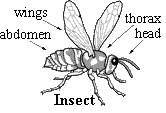
insect: a small arthropod animal that has six legs and generally one or two pairs of wings. Some types of insects that attack rhododendron and azaleas include caterpillars (moths), scale, beetles, bug, and thrip. Contrast with mites and nematodes that are not insects.
iron chelate: ferrous sulfate applied to the soil to prevent or overcome an iron deficiency.
kingdom: the highest grouping of similar organisms. A kingdom contains one or more division in botany or phylum in zoology. Life on Earth is divided into five kingdoms: Animalia (animals), Plantae (plants), Fungi, Protista (protozoans and eucaryotic algae), and Monera (blue-green algae).
lateral bud: a bud that grows from the axil of a leaf and may develop into a branch or flower cluster. Also called axillary bud.
larva, pl. larvae: the active immature form of an insect, esp. one that differs greatly from the adult and forms the stage between egg and pupa, e.g., a caterpillar or grub.
leaf, pl. leaves: a flattened structure of a higher plant, typically green and bladelike, that is attached to a stem directly or via a stalk. Leaves are the main organs of photosynthesis and transpiration.

leaf miner: a small fly, moth, beetle, or sawfly whose larvae burrow between the two epidermal surfaces of a leaf.
lepidote: having minute scales. Tiny scales typically cover the undersides of the leaves. Characteristic used to separate the genus Rhododendron into two major groups: lepidotes and elepidotes.
mealybugs: small, sap-sucking scale insects that are coated with a white, powdery wax that resembles meal. They can form large colonies and can be a serious pest.
meristem: is a group of plant cells that can divide indefinitely. The meristem provides new cells for the plant, hence growth. Some meristematic zones are the cambium layer, shoot tips, root tips, and buds.
mite: a minute arachnid that has four pairs of legs when adult, related to the ticks. Many kinds live in the soil and a number are parasitic on plants or animals. Contrast with insects and nematodes that are not mites.
miticide: a pesticide used to kill mites.
mold: a furry growth of minute fungal hyphae occurring typically in moist warm conditions, esp. on food or other organic matter. The fungi belong to the subdivision Deuteromycotina (or Ascomycotina).
mulch: a material (such as decaying leaves, bark, or compost) spread around or over a plant to enrich or insulate the soil.
mutation: an inheritable change in genetic material.
mycorrhiza, pl. mycorrhizae: any of a group of fungus that forms a symbiotic relationship with roots (or rhizoids), aiding plant nutrition.
native: (of a plant or animal) of indigenous origin or growth.
necrotic: dead or dying such as plant tissue.
nematode: a member of the phylum Nematoda, a large phylum of worms with slender, unsegmented, cylindrical bodies, including the roundworms, threadworms, and eelworms. They are found abundantly in soil and water, and many are parasites. Contrast with insects and mites that are not nematodes.
noxious weed: a plant that is considered by local authorities to be a problem, growing where it is not wanted.
nutrient: a substance that provides nourishment essential for growth and the maintenance of life.
nymph: immature form of insects possissing an egg that does not change greatly as it grows, e.g., a dragonfly, mayfly, or locust.
oomycete, pl. oömycota or oömycetes: ), also known as water molds, any of a distinct fungus-like microorganisms. They have microscopic thread like hyphae just as fungi do, but reproduce both sexually and asexually. Oomycetes occupy both saprophytic and pathogenic lifestyles – and include some of the most notorious pathogens of plants, causing devastating diseases such as Late Blight of Potato and Sudden Oak Death.
order: a principal taxonomic category that ranks below class and above family.
organic: derived from living matter as opposed to inorganic which is not derived from living matter. Coal is organic because it is still the carbonized remains of living moss or other plants. However petrified wood is inorganic since the original organic wood is replaced by inorganic calcareous, siliceous, or other mineral deposit
ovary, pl. ovaries: seed bearing part of the pistil containing the ovules. See flower for a picture.
ovule: the female reproductive cell of flowering plants and cone-bearing plants. After the ovule is fertilized by the male pollen, the ovule becomes a seed.
ovum, pl. ova: a mature female reproductive cell, esp. of a human or other animal, that can divide to give rise to an embryo usually only after fertilization by a male cell.
parasite: an organism which uses its host for food and/or shelter. A parasite gives its host nothing in return, and often makes it sick or even kills the host. Borers are a parasite of woody plants.
pathogen: an infectious biological agent that causes disease to its host. They include viruses, bacteria, fungi, and oomycetes.
peat moss: a large absorbent moss that grows in dense masses on boggy ground, where the lower parts decay slowly to form peat deposits. Peat moss is widely used in horticulture, esp. for packing plants and (as peat) for compost. Peat moss can acidify its surroundings by taking up cations such as calcium and magnesium and releasing hydrogen ions.
pedicel: the slender green stalk that connects the base of the flower to a branch.
perennial: living more than two years and fruiting more than once.
petal: each of the segments of the corolla of a flower, which are modified leaves and are typically colored.
pH: a figure expressing the acidity or alkalinity of a solution on a logarithmic scale on which 7 is neutral, lower values are more acidic, and higher values more alkaline.
phloem: the vascular tissue in plants that conducts sugars and other metabolic products downward from the leaves.
photosynthesis: the process by which green plants and some other organisms use sunlight to synthesize foods from carbon dioxide and water. Photosynthesis in plants generally involves the green pigment chlorophyll and generates oxygen as a byproduct.
phylum, pl. phyla: a principal taxonomic category in zoology that ranks above class and below kingdom. In botany, the equivalent category is division
pinching: the removing of the terminal bud or growth to encourage branching and denser growth habit.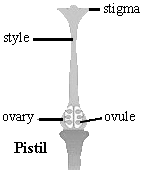
pistil: the female organ of a flower consisting of ovary, style and stigma.
plant: a living organism of the kind exemplified by trees, shrubs, herbs, grasses, ferns, and mosses, typically growing in a permanent site, absorbing water and inorganic substances through its roots, and synthesizing nutrients in its leaves by photosynthesis using the green pigment chlorophyll.
plumule: dimentary shoot or stem of an embryo plant.
pollen: a fine powdery substance, typically yellow, consisting of microscopic grains discharged from the anther, the male part of a flower, or from a male cone. Each grain contains a male gamete that wind, insects, or other animals can transport to the female where it can fertilize the ovule. Pollen grain is the singular form of pollen.
pollinate: convey pollen to or deposit pollen on (a stigma, ovule, flower, or plant) and so allow fertilization.
propagate: (of a plant, animal, etc.) reproduce by sexual or, more commonly, by asexual means such as cuttings, layering, grafting, or tissue culture.
prune: trim or reduce the length of (something, esp. branches of shrub by plants) by using a sharp implement.
pubescent: covered with short soft hairs. Pubescence is the noun for the short soft hairs.
pustule: small raised spot or rounded swelling, esp. one on a plant resulting from fungal infection.
radicle: the part of a plant embryo that develops into the primary root.
reproduction: the production of offspring by a sexual or asexual process. In plants it is more commonly called plant propagation.
rhizome: a thick, horizontal underground stem (not a root) of a plant, that grows close to the ground. Rhizomes have nodes and scale-like leaves; roots form on the lower surface and new shoots can form at nodes. Ferns, mosses, horsetails, ginger, irises, and some grasses have rhizomes.
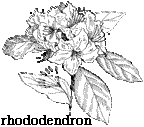 |
|
RNA: (short for ribonucleic acid) is a complex, organic, single-stranded molecule that is found in cells. RNA is created by enzymes based on pattern in DNA. RNA carries DNA's instructions for chemical synthesis (like protein formation) to the cell and guides the formation of these chemicals. There are many types of RNA that have different functions. The major types of RNA are messenger RNA (mRNA, which carries the information for protein synthesis from the chromosomal DNA to the ribosomes), transfer RNA (tRNA, which translates mRNA and bonds with amino acids to correctly form the desired proteins), and ribosomal RNA (rRNA, found in ribosomes).
root: a plant structure that obtains food and water from the soil, stores energy, and provides support for the plant. Most roots grow underground.
saprophyte: a plant that secures its food from dead organic matter. They are generally harmless and sometimes beneficial.
scale insect: a small insect with a protective shieldlike scale. It spends most of its life attached by its mouth to a single plant, sometimes occurring in such large numbers that it becomes a serious pest. Superfamily Coccoidea, suborder Homoptera: several families, in particular Coccidae.
scales: tiny, plate-like structures appearing on leaves and other plant parts.
scion: the shoot or bud grafted on to a rootstock. See grafting
section: a division of classification. Sections and subsections are taxonomic groups between genus and species.
seed: the reproductive unit of some plants. It is formed from a fertilized ovule.
self-sterile: unable to develop seed from its own pollen.
semi-double: (of a flower variety) some stamens have been transformed completely or partially into petals, usually smaller than the outside corolla petals, and commonly contorted.
semi-double hose-in-hose: (of a flower variety) the calyx is transformed into petals, such that it appears as two similar corollas, one inside the other and rotated so that all the petals are visible AND some stamens have been transformed completely or partially into petals, usually smaller than the outside corolla petals, and commonly contorted.
sepal: each of the parts of the calyx of a flower, enclosing the petals and typically green and leaf-like.
sexual reproduction: the normal reproduction where pollen from one flower fertilizes the ova in an ovary in the same flower or a different flower causing seed to be formed which inherits traits of both the pollen parent and the "seed" parent.
shade: comparative darkness and coolness caused by shelter from direct sunlight.
shrub: a woody plant that is smaller than a tree and has several main stems arising at or near the ground.
shoot: is one of two primary sections of a plant; the other is the root. The shoot refers to what is generally the upper portion of a plant, and consists of stems, leaves, flowers, and fruits.
single: a single flower on a rhododendron has typically 5 petals fused at the base with a green calyx, a pistil and 5 to 10 stamens.
soil: the upper layer of earth in which plants grow, a black or dark brown material typically consisting of a mixture of organic remains, clay, and rock particles.
species: the principal natural taxonomic unit, ranking below a genus and denoted by a Latin binomial, e.g., Rhododendron maximum. The species is a group of living organisms consisting of similar individuals capable of exchanging genes or interbreeding.
sphagnum peat: a plant of a genus that comprises the peat mosses.
spider: (of a flower variety) the petals are narrow and straplike rather than being fused at the base.
spindly: a plant that is gawky and ungainly because it grows tall with no fullness.
spore: a minute, typically one-celled, reproductive unit capable of giving rise to a new individual without sexual fusion, characteristic of lower plants, fungi, and protozoans.
sport: a naturally occurring mutation which usually appears spontaneously with characteristics which differ from the rest of the plant, such as different flower color, variegated leaves, etc.
spotting: dots or spots, usually of darker color, sometimes found on the upper petal(s) of some Rhododendrons and azaleas.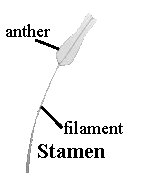
stamen: the male fertilizing organ of a flower, typically consisting of a pollen-containing anther and a filament. See flower for a picture.
stem: the main body or stalk of a plant or shrub, typically rising above ground but occasionally subterranean or the stalk supporting a fruit, flower, or leaf, and attaching it to a larger branch, twig, or stalk.
stigma: the tip of the pistil, usually sticky, which receives the pollen for fertilization of the ovule. See flower for a picture.
stock plant: a plant from which cuttings are taken.
stolon: a creeping horizontal plant stem or runner that takes root at points along its length to form new plants.
stoma, pl. stomata: a pore (or opening) in a plant's leaves. Most of the stoma are on the underside of the leaf. Guard cells open and close the stoma using turgor pressure, controlling the loss of water vapor and other gases from the plant.
style: (in a flower) a narrow, typically elongated extension of the ovary, bearing the stigma. See flower for a picture.
subgenus, pl. subgenera: a taxonomic category that ranks below genus and above species.
subspecies: a taxonomic category that ranks below species and above variety, usually a fairly permanent geographically isolated race. Subspecies are designated by a Latin trinomial, e.g., (in zoology) Ursus arctos horribilis or (in botany) Beta vulgaris subsp. crassa.
suckering: the production of adventitious shoots with elongate internodal lenghts and intervals from near or below ground level. They are usually removed. In grafted plants these are from the rootstock and must be removed to save the graft.
sweeten: (of soil) reduce acidity or make neutral or alkaline.
taxonomy: the branch of science concerned with classification, esp. of organisms; systematics.
temperate: of, relating to, or denoting a region or climate characterized by mild temperatures.
tender: not hardy, usually needing frost free conditions and, sometimes, partial shade.
terminal bud: a bud that grows at the end of a stem or branch. Often contrasted with axillary bud .
tetraploid: describing a cell that has four sets chromosomes, double the number that most other cells of that organism have diploid. In plant breeding, the induction of tetraploids is a common technique to overcome the sterility of a hybrid species. Tetraploid plants in general are more robust and sturdy than diploids
thrip: a minute black winged insect that sucks plant sap and can be a serious pest of ornamental and food plants when present in large numbers. Order Thysanoptera
throat: the base opening of the corolla.
trace elements: chemical elements that are plant nutrients but are only required in minute quantities.
transpiration: the process in which plants lose water through pores in their leaves (these openings are called stomata). As water is lost from the plant, the plant takes up more water (and minerals) through its roots. The rate of transpiration varies as the conditions of the plant change and is controlled by the opening and closing the stomata.
tomentose: covered with matted, wooly hair.
tomentum, pl. tomenta: matted wooly hairs on stems, leaves or seeds.
transplant: move or transfer to another place or situation, typically with some effort or upheaval. replant (a plant) in another place.
tree: a tall, woody perennial plant usually with a single trunk.
truss: compact cluster of flowers or fruit growing on one stalk and from one bud.
understory: a layer of vegetation beneath the main canopy of a forest.
union: the area where the stock and scion meet and join in grafting.
variety: a taxonomic category that ranks below subspecies (where present) or species, its members differing from others of the same subspecies or species in minor but permanent or heritable characteristics. Varieties are more often recognized in botany, in which they are designated in the style Apium graveolens var. dulce. Its members differing from others of the same subspecies or species in minor but permanent or heritable characteristics.
vegetative reproduction: reproduction other than by seed.
vein: a vascular bundle in a leaf blade or petal.
vireya: a large group of tropical Rhododendron species and their hybrids which are typically brightly colored but very tender.
virus: an infective agent that typically consists of a nucleic acid molecule in a protein coat, is too small to be seen by light microscopy, and is able to multiply only within the living cells of a host.
vole: a small, typically burrowing, mouselike rodent with a rounded muzzle. They are also called meadow mouse or field mouse. They can be destructive when they eat roots or the bark on roots.
water sprout: long fast growing shoots that are frequently undesirable.
weed: a plant growing where it is not wanted and in competition with cultivated plants.
weevil: a small beetle with an elongated snout, the larvae of which typically develop inside seeds, stems, or other plant parts. Also called snout beetle . Curculionidae and other families in the superfamily Curculionoidea
whorl: three or more leaves or branches at a node; circle of flower parts as sepals, petals or stamens.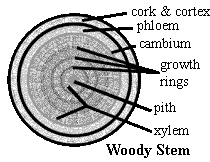
woody stem: the persistent main stalk of a shrub, typically rising above ground. The outer layer is the cortex which may be covered with a corky bark. Underneath is the phloem and the green cambium layer. Inside is the activve xylem layer and pervious annual rings of xylem. In the center is a region called the pith.
zygote: a diploid cell formed by the union of two gametes (it results from the union of an egg cell (ovule) and a pollen grain).

